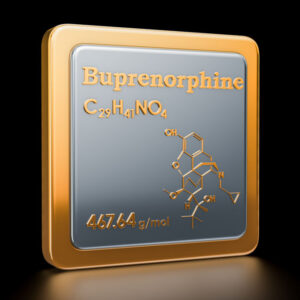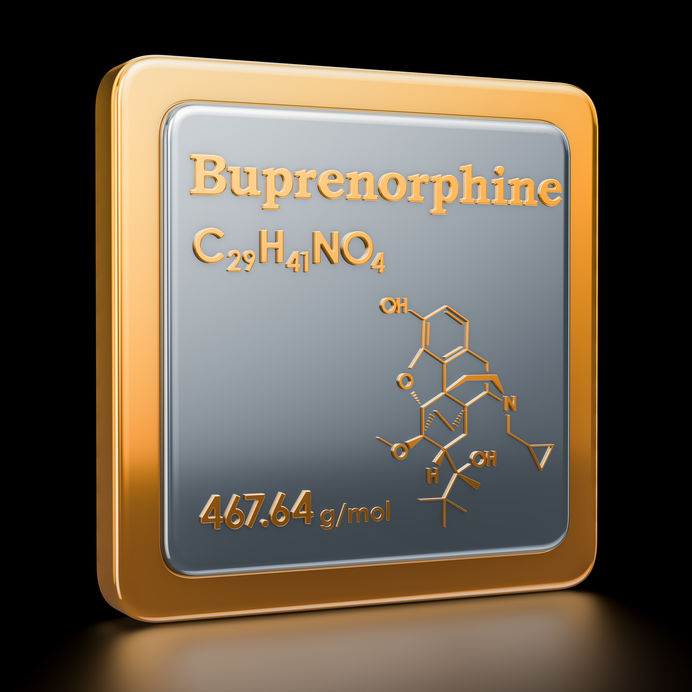
William White said he has for years tried to build bridges of communication across the polarized debates surrounding the use of medications in the treatment of addiction. He wrote “From Bias to Balance: Further Reflections on Addiction Treatment Medications” with a two-part goal in mind that I have borrowed and revised to frame my discussion here regarding the use of buprenorphine to treat opioid use disorder. The first part of White’s goal in “From Bias to Balance” was to help recovery advocates understand the positions of some who reject the use of medications as a pancea for opioid use disorders. The second part was to understand the complexities and limitations involved in the use of buprenorphine to treat opioid use disorders. For what it’s worth, I think I largely agree with White, even if I approach the issue more from the side of abstinence-based recovery.
Seeing medication-assisted treatment (MAT) as a polemic of medication haters and medication advocates muddies the waters by lumping different medications with radically different effects into the same category of MAT. According to SAMHSA in “Medication and Counseling Treatment,” the FDA has approved methadone, buprenorphine and naltrexone to treat opioid use disorder. Both methadone and buprenorphine are themselves scheduled substances by the DEA, meaning they each have a potential for misuse. This should be kept in mind when they are used to treat opioid use disorder, and be seen as a limitation of the respective medication. The other FDA-approved medications used for MAT, including those used to treat alcohol use disorder, are not scheduled substances and do not have the same limitation.
SAMHSA said a common misconception with MAT is that it substitutes one drug for another. According to SAMHSA, these medications are said to relieve the withdrawal symptoms and psychological cravings “that cause chemical imbalances” in the body. The phrase, “that cause chemical imbalances,” implies that the medications help correct an abnormal brain state, an assumption of what psychiatrist Jonanna Moncrieff called the disease-centered model of drug action in The Myth of the Chemical Cure. Buprenorphine and methadone do not balance or correct an abnormal brain state, in my opinion. They are as much exogenous, foreign bodily substances, as heroin or fentanyl are. I think Moncrieff’s alternative model, the drug-centered one, more appropriately captures both the effects of the originally misused drug and the medication used to treat it.
Joanna Moncrieff developed her drug-centered and disease-centered models of drug action to describe how psychiatric medications work, but they also apply to all psychoactive substances, all mind-altering and mood-changing chemicals. The disease-centered model of drug action seems to underlie the uncritical advocacy of medications for opioid use disorders. “Psychiatric drugs [including methadone and buprenorphine] are psychoactive drugs which, by their neurophysiological effects alter ‘mental and emotional life and behaviour for the duration of the treatment.’” Along with their immediate and sometime euphoric effects, when psychoactive medications are taken over a long period of time on a regular basis, they “induce physical adaptations to the presence of the drug.” These adaptations have several consequences, including the following.
When a psychoactive medication is used on a regular, frequent basis, the body attempts to counteract the effects of the drug, which it sees as an invading, foreign substance. In time, a kind of homeostasis is reached between the effects of the psychoactive medication and the body’s adaptations to it. This often leads to the development of tolerance, meaning that larger doses of a medication are needed to achieve the original psychoactive effects. When the medication is stopped or reduced too rapidly, the body’s adaptations overpower the weakened or absent medication effect and symptoms of withdrawal or discontinuation become evident.
When this process is viewed through the lens of a disease-centered perspective, the body’s reaction is interpreted as evidence of the reemergence of the underlying condition which the medication had “balanced.” In this case, opioid use disorder. And the recommended treatment is then a continuation of the psychoactive medication to maintain that balance, perhaps indefinitely. Instead of a disease-centered view of restoring chemical balance, I think opioid medications like methadone and buprenorphine relieve withdrawal symptoms and psychological cravings by creating their own abnormal brain state. This view is consistent with Moncrieff’s drug-centered model of drug action.
See “A Drug Is a Drug Is a Drug” or search this website for “the disease-centered model” for more on this topic. Also see “Models of drug action” on Jonna Moncrieff’s blog and “Rethinking Models of Psychotropic Drug Action.” Nevertheless, as William White said, medications can play a valuable role in addiction treatment:
Medications can play a valuable role in harm reduction, recovery initiation, and recovery maintenance for populations for whom they are indicated and acceptable, but we do a disservice to those populations, their families, and their communities if we portray medication alone as a panacea for the cure of all opioid addiction and fail to carefully communicate both the potential value and the limitations of medications. Issues like the above [see “From Bias to Balance”] need to be part of our nuanced discussions with those we serve. We similarly do a disservice if we let anti-medication polemics go unchecked within our local and national conversations.
Medications are best viewed as an integral component of the recovery support menu rather than being THE menu, and their value will depend as much on the quality of the milieus in which they are delivered as any innate healing properties that they possess. If the effectiveness of medication-assisted treatment (MAT) programs is compromised by low retention rates, low rates of post-med. recovery support services, and high rates of post-medication addiction recurrence, as this review suggests, then why are we as recovery advocates not collaborating with MAT patients, their families, and MAT clinicians and program administrators to change these conditions?
People seeking recovery from opioid use disorders and their families are in desperate need of science-grounded, experience-informed, and balanced information on treatment and recovery support options—information free from the taint of ideological, institutional, or financial self-interest.
Consistent with a drug-centered model of medication action, the potential risks and benefits of buprenorphine as a MAT need to be objectively and scientifically assessed. One of the complexities and a limitation of buprenorphine-based MAT is the fact that it is a Schedule III controlled substance, with a moderate to low potential for physical and psychological dependence. There is also a higher risk of harm, including overdose and death, when buprenorphine is combined with benzodiazepines or other sedatives like alcohol. Because of this danger, information was added to the Boxed Warning on the Medication Guides by the FDA for buprenorphine products on the risks of slowed or difficult breathing and death. Even before it was approved as a MAT, in the US, buprenorphine was known to have problems with diversion and misuse.
While the risks of misuse are lower for buprenorphine than for most other opioids in the US, this is not true in many European and Asian countries. Illicit buprenorphine use has been reported in Sweden, Scotland, Norway, Ireland and Spain. In Finland buprenorphine is the most widely abused opioid. In 2001 Finland had a sharp increase in the misuse of buprenorphine that coincided with a decrease in the availability of heroin. Seventy-three percent of a sample of participants in a Finnish syringe exchange program reported buprenorphine was their most frequently abused injection drug. Participants also used it as a self-treatment for withdrawal.
In “From Bias to Balance,” William White noted the standard practice with medications is to define the precise condition a medication is best suited to treat, and then identify patients who should not be prescribed the medication because of potential harm, meaning the risks outweigh the potential benefits for them. Yet after more than a century of attempts to treat opioid addiction with medications, there is no clinically defined protocol for who is most likely to benefit from pharmacotherapy. Additionally, “the question of potential degree of help or harm of medications in the treatment of addiction is unanswerable without also asking, “‘For whom?’ ‘For what purpose?’, ‘For how long?’, and ‘At what cost?’.”
White said the addiction treatment field has yet to reach consensus on what is the optimal duration of medical support in treatment of opioid use disorder. I think this impasse partly reflects the unacknowledged presumption of Moncrieff’s disease-centered model of drug action among medication advocates. The disease-centered model is itself a product of what is called the medical model, which sees psychopathology as the result of biology; a physical/organic problem in brain structures, neurotransmitters, etc. The over reliance on the medical model perspective (and the disease-centered model of drug action) in addiction treatment leads to an imperfect conception of substance use disorder and a distorted understanding of the risks and benefits of buprenorphine when it used to treat opioid use disorder.
Self-consciously taking a drug-centered model of drug action with buprenorphine and rejecting the medical model perspective of substance use disorders is necessary to truly reach a consensus on the potential degree of help or harm of buprenorphine in the treatment of opioid addiction. Consider what Joanna Moncrieff said in The Myth of the Chemical Cure when contrasting her two models of drug action to the use of buprenorphine in MAT:
The disease-centred model suggests that the important or ‘therapeutic’ effects of drugs are achieved by their effects on a particular disease process. By acting on the mechanisms of the disease, drugs move the human organism from an abnormal physiological state towards a more normal one. In contrast, the drug-centred model suggests that drugs themselves create abnormal bodily states. In the case of drugs that act on the brain or the nervous system, these states involve an alteration in subjective experience or consciousness. Psychiatric drugs [including buprenorphine, I would add] are psychoactive drugs which, by their neurophysiological effects alter ‘mental and emotional life and behavior for the duration of the treatment’ (Cohen & Jacobs 2007). When we consider drugs that are taken recreationally we have no trouble recognizing this fact and we refer to the altered mental state drugs produce as ‘intoxication’. But there is no fundamental distinction between drugs used for psychiatric purposes and other psychoactive drugs. They all act on the nervous system to produce a state of altered consciousness, a state that is distinct from the normal undrugged state.
The impasse between so-called medication haters and medication advocates is philosophical, not scientific. Beginning with a drug-centered model of buprenorphine can help us move forward in correctly addressing questions on the potential degree of help or harm buprenorphine brings to the treatment of addiction. We can more clearly discuss the complexity and limitations of using buprenorphine, an opioid medication, to treat opioid use disorder when that treatment is viewed through a drug-centered model of medication action.





